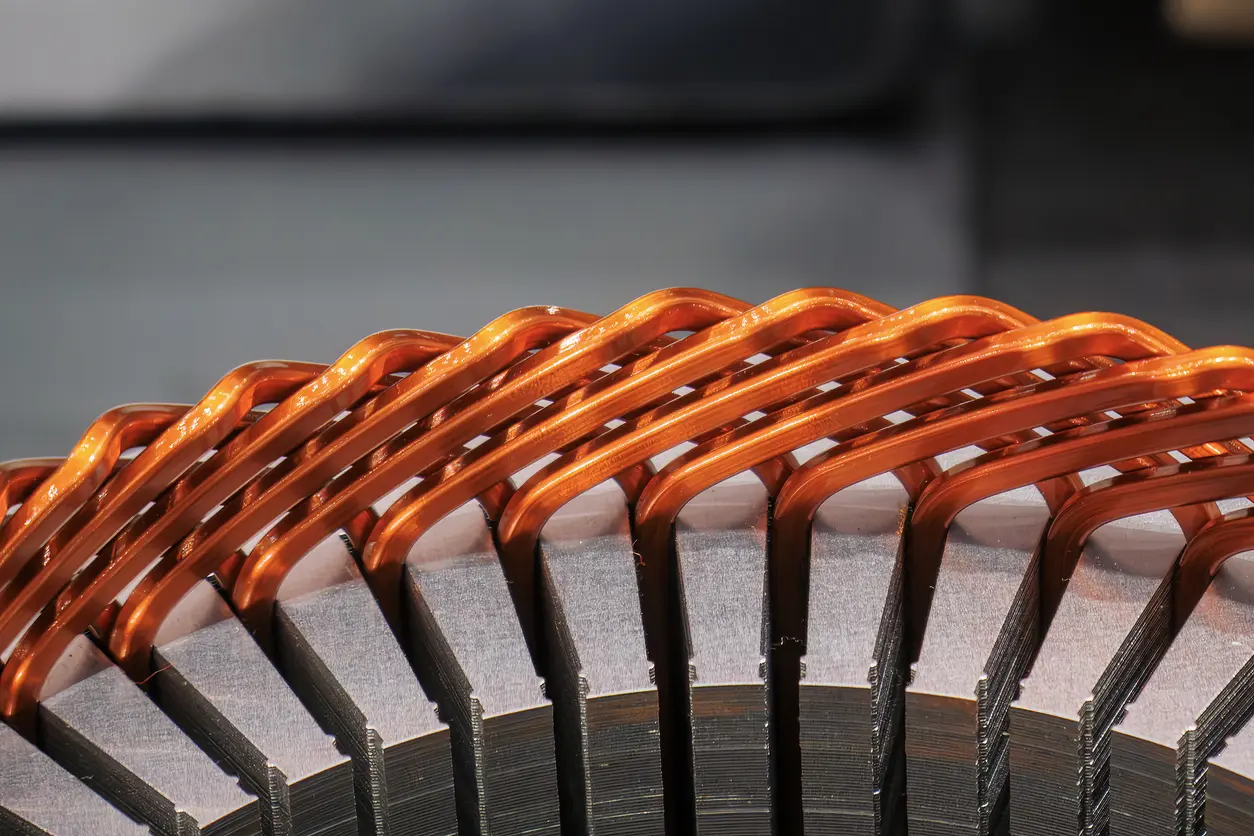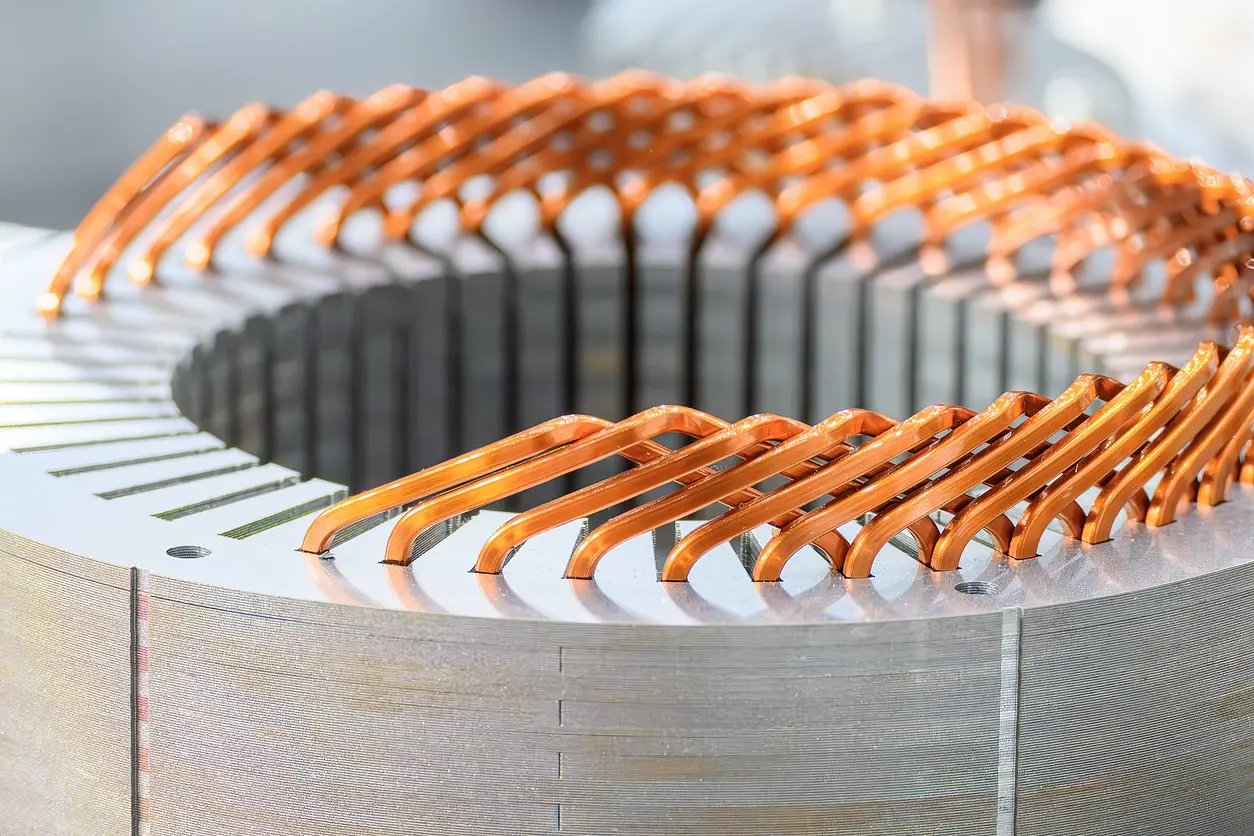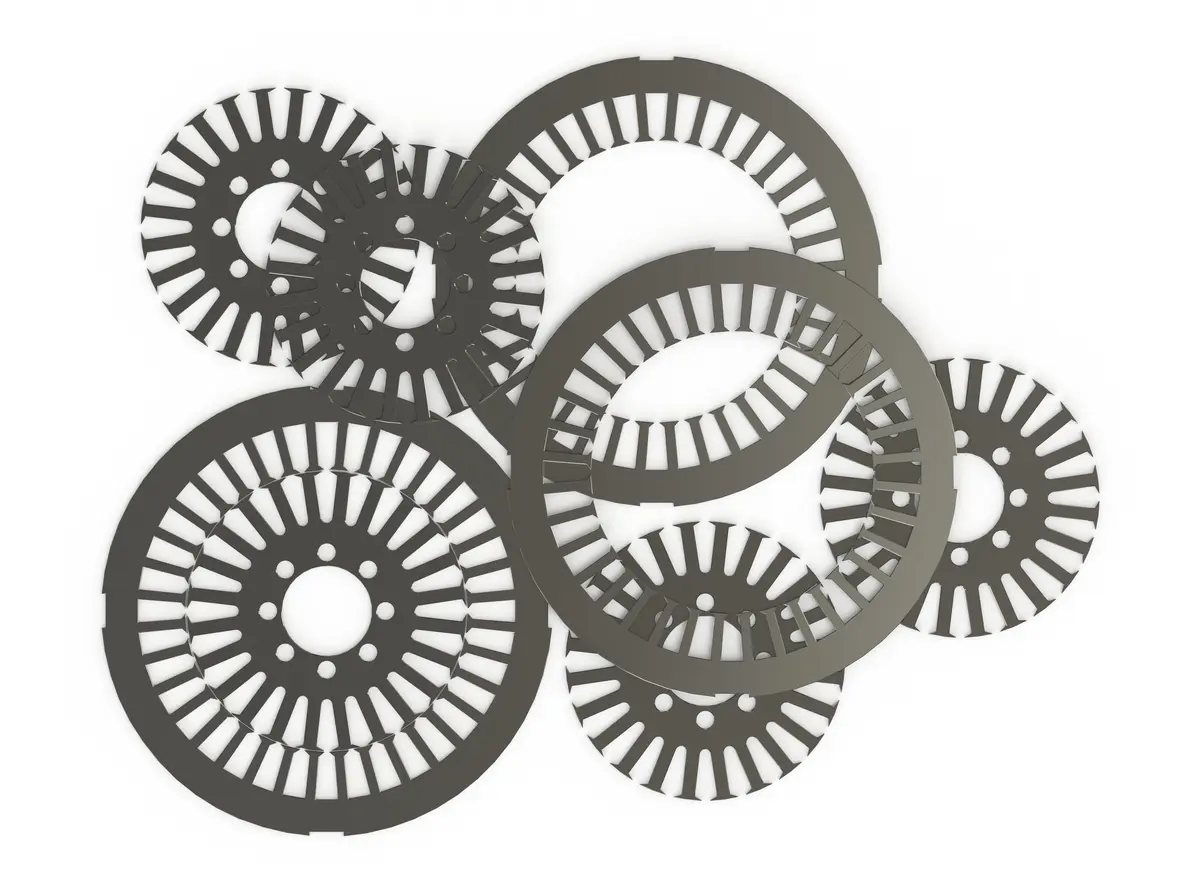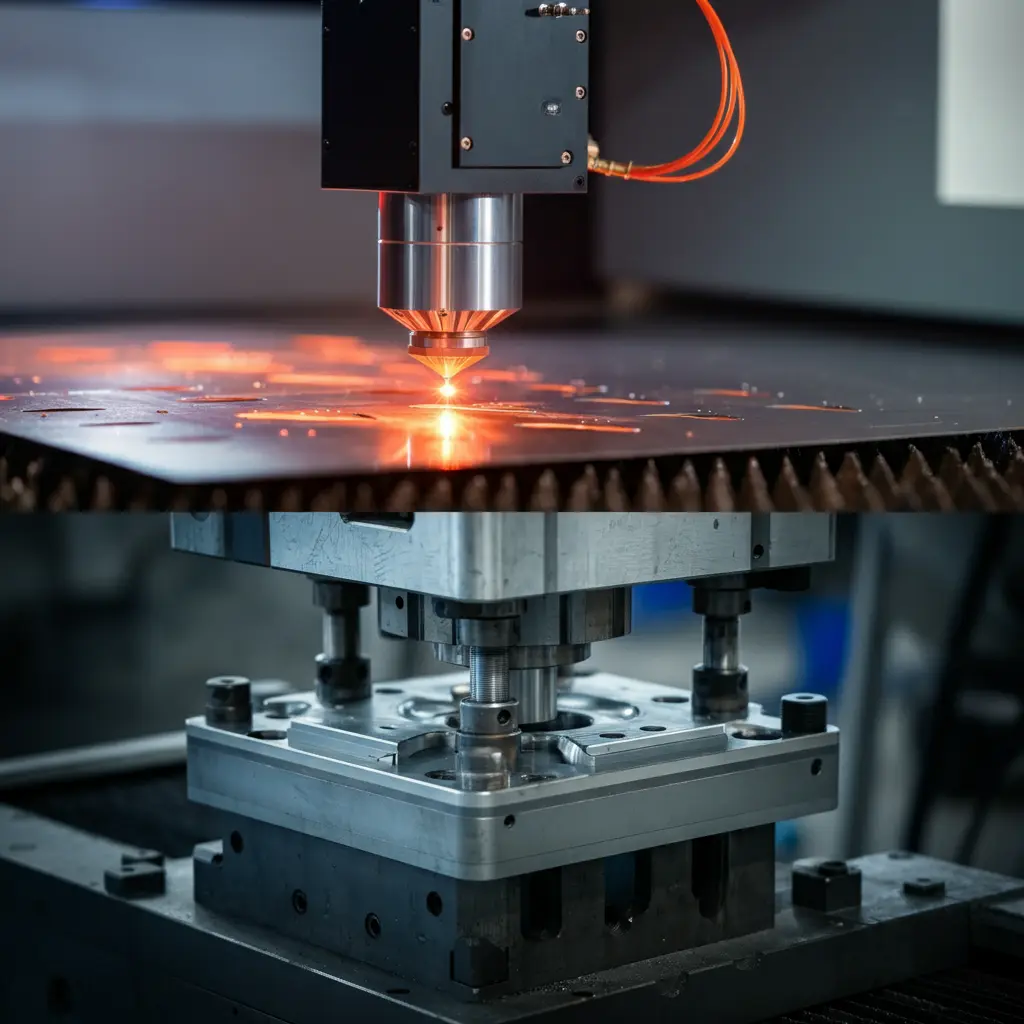Discover how cutting-edge drone core stacking techniques may offer incremental improvements in UAV efficiency and reliability. Explore advancements in lamination materials, precision assembly, and tailored solutions that strive to enhance both flight time and handling.
1. Introduction to Drone Core Stacking and Lamination
1.1 Understanding the Importance of the Motor Core in UAVs
The motor core stands at the heart of a drone’s propulsion system, playing a vital role in transforming electrical input into the rotational force that lifts and maneuvers the UAV. Although propellers, batteries, and controllers often capture the spotlight, the nuanced engineering of the lamination stack within the motor core quietly shapes the craft’s overall flight quality. Through careful material selection, precise assembly techniques, and advanced drone core stacking, incremental refinements can have lasting impacts on energy conversion efficiency and structural integrity.
Small improvements in lamination and stacking processes can yield tangible enhancements in thrust, stability, and responsiveness. Rather than resorting to overly complex designs, UAV manufacturers can fine-tune the uniformity and quality of each lamination layer to optimize the motor’s magnetic properties. By reducing vibration and ensuring consistent performance, these measures help maintain smoother flight paths and more predictable handling, ultimately building trust in the drone’s capabilities.
While many factors influence a drone’s overall success, the motor core remains an essential pillar. Incremental refinements in lamination design provide a path toward longer flight durations, more agile maneuverability, and improved payload capabilities. This measured approach, emphasizing steady progress over bold claims, underlines the importance of thoughtful engineering and careful material selection.
1.2 Industry Context and Recent Advancements
Historically, standard lamination practices placed limitations on motor core performance. However, recent breakthroughs in materials science and manufacturing tolerances have opened avenues for more advanced drone core stacking techniques. This continuous improvement such as the self-bonding method helps meet the ever-increasing demands of a fast-evolving UAV industry seeking endurance, efficiency, and reliability.
As the market pushes for longer flight times and versatile mission profiles, tighter alignment and improved lamination quality have emerged as key enablers. By refining these elements, drone designers gain the potential to deliver results more consistently, even under challenging conditions.
No single solution guarantees perfection, yet the steady progression in lamination materials, stacking methods, and assembly protocols provides a robust foundation for ongoing innovation. The industry’s collective effort to advance drone core stacking is shaping a more competitive and resourceful landscape for next-generation UAV designs.
2. Breakthrough #1: Advanced Material Selection
2.1 High-Grade Electrical Steels
One of the most significant changes shaping modern drone core stacking is the move toward high-grade electrical steels. While standard steel grades might suffice for basic motors, these specially formulated alloys offer lower core losses, more stable magnetic properties, and improved mechanical strength. Although not a guarantee of perfection, this careful material choice aims to maintain consistent performance under demanding conditions, including frequent altitude changes and varying load requirements.
It’s important to balance material quality with weight, as UAV designers are often cautious about adding unnecessary mass. By selecting high-grade steels that deliver strong magnetic flux with minimal loss, manufacturers help ensure that the motor’s power-to-weight ratio is as favorable as possible. This thoughtful decision-making process supports incremental improvements in flight time and maneuverability without making unrealistic claims of performance miracles.
Moreover, the durability and corrosion resistance of certain steel grades contribute to longer operational lifespans. While initial investments may be higher, the long-term benefits—fewer maintenance issues, reduced downtime, and more reliable missions—help justify the approach.

2.2 Special Lamination Coatings and Treatments
Beyond the steel itself, innovative coatings and treatments can further enhance the properties of lamination stacks. Anti-corrosive layers, for example, help maintain integrity over time, particularly in drones that operate in humid or corrosive environments.
Annealing processes can improve magnetic permeability, ensuring that each lamination layer contributes effectively to the motor’s magnetic circuit. This subtle yet meaningful optimization underlines the evolving sophistication in drone core stacking.
While no single material or coating can guarantee dramatic leaps in performance, the combination of advanced electrical steels and forward-looking treatments steadily shapes a more capable, efficient, and reliable UAV core. By methodically improving materials, drone designers contribute to a landscape where incremental gains in efficiency, durability, and flight quality become a tangible reality.
3. Breakthrough #2: Precision Stacking Techniques
3.1 Automated Laser Cutting and Stamping
Achieving fine tolerances in lamination thickness is essential for stable drone core stacking. Advanced laser cutting and stamping technologies now allow for near-micron precision, aiming to reduce inconsistencies that could compromise motor performance. Although these methods are not a guarantee of flawless results, they represent a measured approach to increasing uniformity and potentially enhancing a drone’s efficiency and responsiveness.
Minimizing burrs and material waste benefits manufacturers and end users alike. Smoother edges reduce the chance of misalignment, while less material loss can help control costs and maintain steady quality. In the context of UAVs, this careful trimming of excess metal may contribute to more predictable operation under changing flight conditions, though it should be viewed as one of several incremental improvements rather than a sweeping solution.
By maintaining consistent thickness and shape across large production runs, these precision cutting techniques offer a more dependable foundation. Although not a single factor ensures perfect drone performance, such consistency in lamination quality helps establish a reliable baseline for ongoing enhancements.

3.2 Interlocking & Riveting Methods
Interlocking laminations can strengthen the entire core structure. This method, often utilized in drone core stacking, can provide a more stable assembly that may reduce internal shifting over time, supporting a steadier power output.
Reducing vibrations and mechanical noise contributes to smoother flights. While not a stand-alone guarantee of quieter drones, refined interlocking techniques help mitigate certain sources of instability, potentially making the UAV more responsive and less prone to mechanical wear.
Rivets and fastening systems, when carefully chosen, help secure the stack over prolonged use. Such measures are not likely to deliver dramatic performance leaps on their own, but they do offer a sensible step toward longevity and reliability.
3.3 Innovative Core Assembly Technologies
Robotic assembly lines introduce a new level of precision and repeatability. By automating processes, manufacturers aim to minimize human error, potentially leading to more uniform stacks and gradual improvements in UAV flight consistency.
Multi-axis alignment tools help ensure that the motor’s magnetic elements are precisely oriented. Although no system is flawless, this approach attempts to maintain the careful balance needed for efficient drone propulsion.
Streamlined production cycles, supported by these innovative methods, may accelerate time-to-market while preserving quality standards. In turn, this careful approach aids in delivering reliable, steady improvements rather than making inflated claims about performance breakthroughs.
4. Breakthrough #3: Enhanced Magnetic and Thermal Management
4.1 Optimizing Magnetic Flux Distribution
One of the more measured approaches to improving performance lies in carefully refining how magnetic flux is distributed within the motor core. By adjusting lamination grain orientation and ensuring uniform spacing through precise drone core stacking, engineers strive to achieve a smoother magnetic field that can potentially translate into more consistent torque output. While no single measure can guarantee dramatic improvements, these subtle adjustments may help balance performance goals with realistic expectations.
When magnetic flux is better aligned, the motor may use energy more effectively. This, in turn, could lead to enhanced reliability and a modest increase in flight time, given that power is not wasted through unnecessary internal losses. Although such results will vary among different UAV configurations, the effort to refine magnetic characteristics is seen as a sensible step forward rather than a promise of absolute perfection.
Stable torque across a range of operating conditions remains a core objective. By methodically fine-tuning lamination designs and verifying their effects in controlled settings, developers can gain a clearer understanding of how improved magnetic flux contributes to better UAV handling and flight consistency over time.
4.2 Superior Heat Dissipation Strategies
Beyond magnetic refinements, managing heat generation is another crucial priority. Effective drone core stacking looks for ways to facilitate airflow through carefully designed lamination stacks, potentially guiding heat away from sensitive components.
In some cases, integrating thermal management materials or coatings can help maintain optimal operating temperatures. While these strategies are not a guaranteed fix for all heat-related concerns, they reflect a measured approach to preserving motor longevity.
Better heat dissipation, in combination with a stable magnetic environment, sets the stage for gradual improvements in motor durability. This approach emphasizes steady progress rather than quick fixes.
4.3 Emphasis on Energy Efficiency
Refinements in both magnetic alignment and thermal management aim to reduce internal losses. The result may be a more energy-efficient motor that leverages each watt of power more effectively.
Lower power consumption, even if incremental, can support extended flight durations, offering an appealing benefit without overstating potential gains.
Balancing weight, stability, and durability, these careful adjustments in lamination design contribute to a more sustainable performance profile. Over time, these incremental steps encourage a thoughtful evolution of UAV capabilities.
5. Breakthrough #4: Customization and Scalability for Various UAV Applications
5.1 Tailored Designs for Different Drone Categories
As the drone market expands, the spectrum of applications continues to widen, from high-speed racing drones to heavy-lift industrial UAVs. By employing flexible drone core stacking solutions, engineers aim to adapt motor core configurations to different flight profiles, payloads, and mission goals. While not a simple formula that guarantees optimal outcomes in every scenario, these tailored approaches provide a foundation for balanced improvements in power, endurance, and responsiveness.
Rather than relying on one-size-fits-all motor cores, customization encourages thoughtful selection of materials, laminations, and assembly techniques. Each variable—be it thickness, coating type, or material grade—can be adjusted incrementally to better align with the unique requirements of a given application. Such careful alignment does not claim to solve every operational challenge, but it does offer a measured path toward incremental enhancements.
Over time, these adaptable strategies may help drone operators achieve more consistent performance under a range of conditions. This idea rests on the notion that slight modifications, when thoughtfully applied, can make a tangible difference without overpromising results.
5.2 Modular and Scalable Manufacturing Approaches
Scalability is also an increasingly important factor. As demand for UAVs grows, the ability to scale production while maintaining quality remains vital. Flexible drone core stacking techniques, supported by modular assembly lines and adaptive manufacturing processes, aim to meet larger volume requirements without significantly compromising consistency.
Modular approaches enable rapid adjustments to core dimensions and lamination counts. While these changes are not always transformative, they can help align product capabilities more closely with emerging operational needs.
This emphasis on adjustability ensures that as UAV technologies evolve, motor core solutions can evolve alongside them. Through a steady process of refinement and controlled experimentation, the industry works toward a future where drones are not only efficient and reliable but also easily adaptable to new challenges.
5.3 Integrating Digital Design Tools and Simulations
Digital modeling, CAD, and simulation tools contribute to these advancements by allowing designers to visualize and predict how different drone core stacking configurations might behave before physical prototyping. While these predictions are not absolute, they help guide design choices and reduce trial-and-error cycles.
As analytical methods improve, developers gain the ability to fine-tune core structures in more focused ways. This approach does not claim faultless precision, but it does represent an effort to inform decision-making with data rather than guesswork.
Over time, such incremental, data-driven refinements may help build a more reliable and adaptable foundation for the rapidly diversifying world of UAV operations.
6. How Drone Core Stacking Providers Add Value
6.1 Expert Guidance and Engineering Support
Navigating the complexities of drone core stacking often calls for a well-informed partner. Providers with specialized knowledge can offer insights into material selection, lamination thicknesses, and assembly methods that align with specific UAV requirements. While no one solution fits all scenarios, having access to seasoned engineers can help identify incremental improvements that strengthen a drone’s core performance without overreaching claims.
Close collaboration allows for a more thorough understanding of a UAV’s operational profile, leading to more tailored design recommendations. This careful, considered approach may help mitigate potential issues before they arise, though it cannot eliminate all challenges.
When working together, manufacturers and clients can engage in a data-driven dialogue, leveraging past projects, prototyping, and simulations to guide decisions. This process encourages growth and refinement rather than hastily asserting perfection.
6.2 Quality Assurance and Certifications
Comprehensive quality assurance practices and adherence to recognized standards are fundamental. Established drone core stacking providers often implement quality checks and maintain certifications that reflect their commitment to reliability. Although certifications alone do not guarantee flawless performance, they can indicate a provider’s dedication to maintaining consistent outcomes.
By adopting rigorous testing protocols, providers help ensure that laminations meet specified tolerances, coatings adhere properly, and assembled cores function as intended. This conservative approach emphasizes incremental improvements in quality rather than making unverified claims of superiority.
Having a traceable documentation process enables customers to understand the origin, handling, and testing of each component, contributing to a more informed decision-making framework.
6.3 Scaling Production Without Compromising Quality
As the UAV market expands, providers with scalable processes can respond to both small R&D orders and larger production runs. Although scaling up may present challenges, a methodical approach helps maintain steady quality, rather than promising dramatic leaps.
Consistent, reliable production supports long-term partnerships. Over time, as trust builds, customers may find that working with reliable drone core stacking providers fosters a stable environment for continuous improvement.
In this way, value is added not through sweeping guarantees, but through careful, steady efforts that help drones meet evolving operational demands while maintaining realistic performance expectations.
Further Reading:





